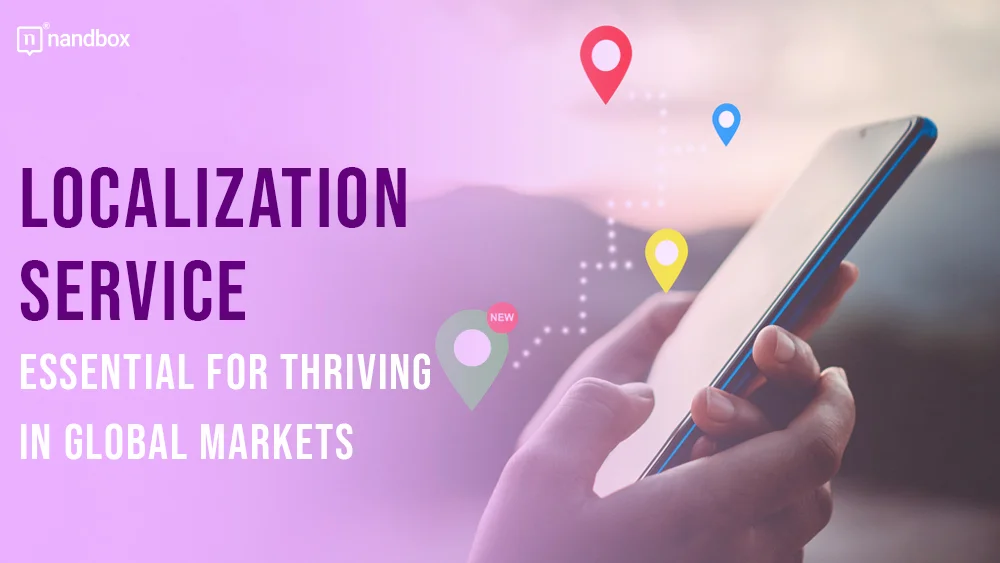Opening the door for international success in a globally connected marketplace means more than just translating the same content into different languages. Indeed, plumbing the depths of engaging globally requires the nuances of a localization service. This strategic approach allows businesses to tailor content through translation and catering to cultural and linguistic nuances that tap into countries or regions where they want to expand. Localization goes a lot further than translation: as well as adapting the language, it can include all or part of a product, marketing materials, and digital content (including mobile apps) that allows organizations to align their products with cultural differences, laws, and consumer expectations and preferences for each target market. A localization service gives businesses the tools to better communicate and trust with target audiences beyond their borders.
Understanding the Difference between Translation and Localization
-
Key Concepts
While closely related, translation and localization serve different purposes. Translation is the process of transferring text from one language to another to convey the same meaning. Localization, on the other hand, involves carefully adapting the material to fit the cultural, social, and legal aspects of the target readership in each foreign country in which the work appears.
-
Cultural Nuances
Good localization takes into account cultural differences, such as idioms, local customs, and societal norms, to go beyond a mere translation of the language and make the material relevant and culturally appropriate. Cultural missteps are thus avoided so that the material doesn’t break with local cultural expectations.
-
Practical Examples
Faux pas but in ancient history also demonstrates the necessity of fine cultural localization – the advertising campaign by a major American brand booming with the slogan ‘When cowboys fly,’ which doesn’t translate into ‘Whenever it is necessary’ like its Spanish-speaking Mexican counterpart; or the Mexican airline that decided it was an excellent opportunity to position itself as a sexy brand by advertising a promotional phrase that literally meant ‘Fly naked’ (oops! that’s what Siamese slip had meant in Mexico a few decades ago). Ignoring the local nuances of translation could also omit the cultural meaning of symbols, including colors that could be perceived differently in certain regions, damaging the brand with no second chances for such a luxury.
Why Localization is Critical for Global Business Success
Localization is crucial for companies wanting to expand in the global market as it expands market coverage, increases customer engagement, and boosts conversions. Firstly, localizing products and marketing to specific cultural contexts makes companies’ offers more accessible and appealing to a broader range of potential customers. For example, translating content from English to Urdu can effectively tap into the Pakistani market, thereby broadening market coverage. Secondly, localization expands customer engagement because providing content in the native languages of different markets helps consumers feel a deeper engagement with the brand. This, in turn, improves conversion rates since customers are more likely to buy a product or service if it resonates with their cultural and linguistic preferences.
Implementing Effective Localization Strategies
For the effective execution of website localization strategies, the three business areas should focus on market research, cultural adaptation, and technology and tools.
-
Market Research
Market research is one of the core responsibilities of localization. It gathers and analyzes data about the target market, from language preferences to cultural expectations to consumer behavior. As a result of this data, global (international) marketing efforts for a product or service are adapted to local markets to be culturally relevant and practical.
-
Cultural Adaptation
Cultural adaptation, however, goes even further than translation. It means working with deep local insights into culture, values, and more so that a marketing message, feature, or blog post will feel customized to the audience—compelling not just in terms of words used but in appealing more broadly to the heart and imagination of consumers and helping to build brand loyalty.
-
Technology and Tools
Taking advantage of the numerous tools available makes the work involved in localization much more accessible. Translation management systems and localization platforms help manage workflows, store translations and glossaries, and enable the management of teamwork. For instance, translation memory detects texts that have already been translated so that they can be reused.
By emphasizing this triad of select strategic areas, companies can increase their direct presence in the market and establish valuable communication with global audiences.
Measuring the Success of Localization Efforts
-
Key Performance Indicators (KPIs)
Ultimately, how well these localization endeavors go is a matter of Key Performance Indicators, the metrics that reflect the project’s success. Companies gather data on turnaround time, such as how long it takes to create and approve a translation project or customer-discovery metrics like the Net Promoter Score. These metrics help identify areas that are working well and need more focus. For example, is the percentage of translation milestones completed on time more than 80% or less? Is the translation error rate decreasing over previous years, or is it rising?
-
Case Studies
The cases of YAZIO and Asana—and any number of other companies successfully engaging with a global market—show what localization that takes into account the nuances of the cultural and linguistic environment can achieve. Their successes show that taking the time to adapt content to each new market can lead to greater user engagement and market penetration. By looking at how localization is being implemented in the tech sector, businesses can learn from how these new worlds are being won.
-
Adjusting Strategies Based on Data
It’s never ‘set and forget.’ In addition to focusing on optimized processes and high-performing teams, the localization process needs to be responsive to performance data. Tracking key performance indicators continuously allows businesses to make sound strategic decisions regarding localization as end markets change. This adaptive approach keeps localization aligned with ever-changing demand in global markets and supports growth for the business and the pleasure of its customers.
Conclusion
Your understanding of the differences between translation and localization, the role of culture, and the best practices of localization have informed the skills necessary to ensure success in global business. By explaining the importance of localization and the tangible benefits of going beyond translation, you now understand the risks of failing to understand the cultural, legal, and lingual peculiarities of your target market and why adopting a localized, nuanced, and culturally sensitive approach to target markets can help your company increase market presence, customer experience and, ultimately, conversion rates. Hopefully, the provided examples and case studies showed the risks of neglecting localization and the advantages of taking a nuanced, culturally sensitive approach to foreign markets.
The lessons we take from insight into which localization projects deliver value, measuring the impact of investments in technology and tools, or point to the areas – whether market research or cultural adaptation. Where assets are critical. Go beyond the compelling case for investing in localization to becoming a roadmap for the multinationals of tomorrow with projects at their cores ranging across the globe. In a world where companies must operate in a complex maze of differing regulations, tariffs, and customs, refined localization strategies will help companies thrive in today’s global markets. It will also help them connect with their customers wherever they may be. Breaking down the divide between cultures and positioning businesses for success and advantage on the global stage.





